Print On Demand vs Dropshipping: Find the Best Model for You
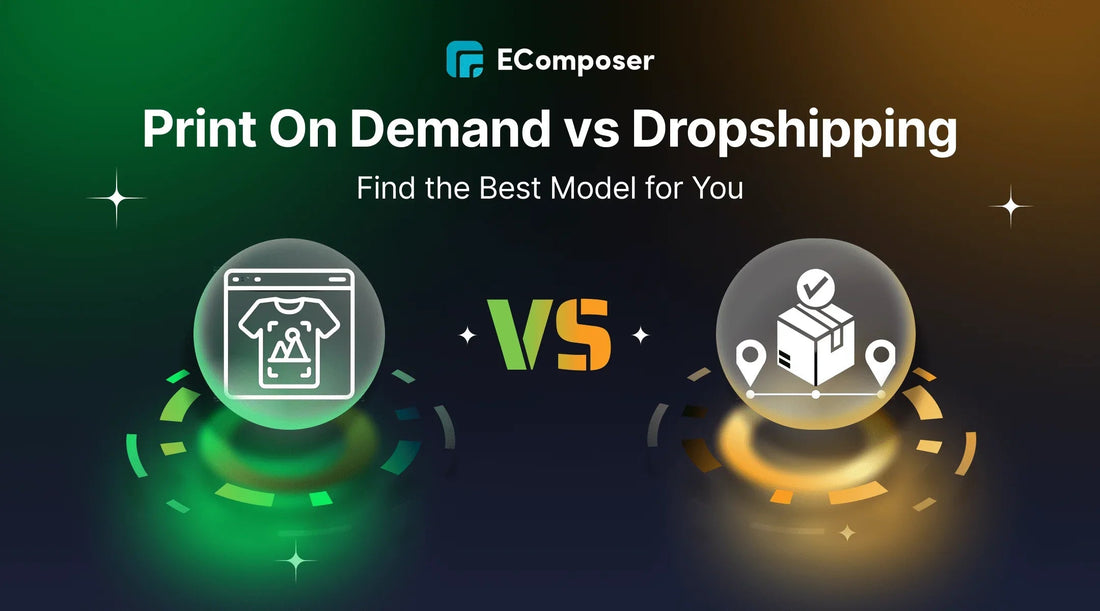
Table Of Contents
Online entrepreneurship has skyrocketed in recent years, fueled by accessible eCommerce tools and a growing demand for side hustles and full-time digital businesses. As more people look for flexible, low-risk ways to enter the market, two models stand out: Print-on-Demand (POD) and Dropshipping.
In this blog, Print On Demand vs Dropshipping: Find the Best Model for You, we'll break down the key differences, benefits, and challenges of each method. Whether you're a creative seller or a product curator, this guide will help you choose the right path for your goals.
Understanding the Models
What is Print-on-Demand?
 Print-on-demand (POD) is a creative business model where products like embroidered t-shirts, hats, or tote bags are only made after a customer places an order. This means you don't have to stock any inventory or invest in bulk production upfront.
Print-on-demand (POD) is a creative business model where products like embroidered t-shirts, hats, or tote bags are only made after a customer places an order. This means you don't have to stock any inventory or invest in bulk production upfront.
How it works:
- You upload your custom design to a POD platform.
- When someone orders, the supplier creates the product (e.g., embroidery on a cap).
- The customer receives a direct shipment of the goods.
Pros of POD:
- No inventory risk. You only pay after a sale.
- Great for unique, personalized products.
- Low startup costs and easy to scale.
Cons of POD:
- Production and shipping can take longer.
- Higher per-item costs compared to bulk buying.
- Limited control over product quality or packaging.
Example: Imagine selling embroidered baseball caps with your logo. You don't order any caps in advance. Each cap is made only when a customer places an order.
What is Dropshipping?
 Dropshipping lets you sell a wide range of products without ever holding inventory. Rather, the provider sends the product straight to the buyer when they place an order through your store.
Dropshipping lets you sell a wide range of products without ever holding inventory. Rather, the provider sends the product straight to the buyer when they place an order through your store.
How it works:
- You list products from a supplier in your online store.
- A customer buys an item.
- You forward the order to the supplier, who ships it.
Pros of Dropshipping:
- Huge variety of products to sell.
- No need for upfront inventory investment.
- Focus on marketing and customer service.
Cons of Dropshipping:
- Shipping times vary and can be long.
- Less control over product quality and fulfillment.
- Lower profit margins due to competition.
Example: You create a store selling embroidered backpacks sourced from different suppliers. You never see or touch the backpacks; the supplier handles everything after the sale.
Print-on-Demand vs. Dropshipping: Key Things to Consider
a. Initial Costs
 Starting a Print-on-Demand (POD) or Dropshipping business means you can skip the huge upfront cost of buying inventory. But both models come with their initial expenses that are important to keep in mind.
Starting a Print-on-Demand (POD) or Dropshipping business means you can skip the huge upfront cost of buying inventory. But both models come with their initial expenses that are important to keep in mind.
Print-on-Demand Initial Costs
With POD, your main investments often focus on:
- Design Creation: Hiring a professional designer or buying design software if you're creating your own embroidery or print designs.
- Product Samples: Ordering samples of your products helps you check the quality firsthand. It's worth spending a bit upfront to avoid disappointing customers later.
- Branding & Packaging: Custom packaging or branded labels might cost extra, but they help your store look professional and memorable.
- Marketing & Website costs: Building a polished online presence with a user-friendly website and some initial marketing spend to reach your target audience.
Example: Imagine spending $50 on a logo design, $30 on product samples, and $100 on initial social media ads. These may seem small, but they lay the foundation for a strong brand.
Dropshipping Initial Costs
Dropshipping avoids inventory costs but still needs investment in areas like:
- Product Testing: You'll want to test different items to find which ones sell best.
- Research Tools: Subscriptions to product research platforms or analytics tools can help identify trending products and profitable niches.
- Advertising: Running ads on platforms like Facebook or Google to drive traffic to your store is essential, especially at the start.
- Dropshipping Store Setup: Costs may include premium website themes, apps, or plugins that improve customer experience and increase conversions.
Example: You might spend $100 testing products, $50 on research tools, and $150 on your first advertising campaigns.
Both models save you from large inventory costs, but success depends on smart initial spending. POD requires investment in design and quality control, while dropshipping needs to focus on product research and marketing. Knowing these upfront costs helps you plan better and launch confidently.
b. Risk Level
 When starting a Dropshipping business or POD store , the financial risk is generally low because you don't have to buy inventory upfront. This gives you the freedom to test ideas and learn without risking a lot of money. However, each model has its specific risks to be aware of.
When starting a Dropshipping business or POD store , the financial risk is generally low because you don't have to buy inventory upfront. This gives you the freedom to test ideas and learn without risking a lot of money. However, each model has its specific risks to be aware of.
Print-on-Demand Risks
In POD, your biggest risks come from creativity and product quality:
- Creative Risk: If your designs or embroidery don't catch your audience's interest, sales may be slow. Although you won't lose money on unsold products, the time and effort invested in design and marketing might not pay off right away.
- Print or Embroidery Quality: Since products are made after each order, inconsistencies in printing or stitching can happen. Poor quality can lead to unhappy customers and bad reviews.
- Fulfillment Delays: Some POD providers might take longer to produce and ship orders, which can frustrate buyers.
Example: Imagine launching a line of embroidered hats with cool designs but receiving complaints because the stitching fades after a few washes. This can hurt your brand unless you partner with a dependable supplier who guarantees quality.
Dropshipping Risks
Dropshipping relies heavily on suppliers, which creates a different risk profile:
- Supplier Reliability: You don't control stock levels. You may have to cancel orders or let clients down if a supplier runs out of a popular item.
- Shipping Delays: Since products ship directly from suppliers, delays in shipping times are common and can lead to negative feedback.
- Return and Refund Challenges: Handling returns or refunds can be complicated if the supplier's policies are unclear or slow to act.
- Customer Satisfaction: Because you're not managing the products yourself, any mistake on the supplier's end reflects on your store.
Tip: To reduce risks in dropshipping, consider working with multiple suppliers. This way, if one runs low on stock or delays shipments, you have backup options. Also, set clear expectations with customers about delivery times to avoid frustration.
c. Inventory Management
 One of the biggest perks of both Print-on-Demand (POD) and Dropshipping is that you don't need to store physical products. However, just because you're not managing a warehouse doesn't mean inventory isn't a concern. How each model handles inventory can significantly affect your customer experience and overall business flow.
One of the biggest perks of both Print-on-Demand (POD) and Dropshipping is that you don't need to store physical products. However, just because you're not managing a warehouse doesn't mean inventory isn't a concern. How each model handles inventory can significantly affect your customer experience and overall business flow.
Print-on-Demand Inventory Approach
POD only creates items in response to orders from customers. This made-to-order system removes the risk of unsold inventory and helps reduce waste. You won't deal with overstock or understock because nothing exists until someone buys it.
Here's how POD helps streamline inventory:
- No warehouse costs or storage headaches
- Low risk of outdated or slow-moving items
- Each item is produced fresh, often tailored with custom embroidery or printing
However, this also means fulfillment takes longer since the product isn't ready to ship immediately. A reliable POD supplier with fast production times and multiple fulfillment centers can help reduce wait times. Choosing an experienced partner is essential to keep orders flowing smoothly.
Example: If you sell embroidered tote bags using POD, the supplier starts stitching only after a customer checks out. This ensures that every order is brand-new and customized, but it also means you'll need a supplier who can meet demand during peak seasons.
Dropshipping Inventory Approach
In dropshipping, products are pre-made and stocked by your supplier. While this makes shipping faster in some cases, it also means you're fully dependent on the supplier's inventory levels. If a product runs out of stock and you're not aware, you might accidentally oversell and disappoint customers.
Here are the inventory challenges in dropshipping:
- High risk of selling out-of-stock products
- Must rely on real-time inventory sync with suppliers
- May lose sales or customer trust due to backorders or cancellations
To stay competitive, many dropshippers use inventory automation tools that connect directly with their suppliers. These tools help update your product listings in real time, so you're not promoting items that are no longer available. Still, strong communication and supplier reliability are key to avoiding costly inventory issues.
POD gives you control over design and avoids inventory waste, but fulfillment may be slower. Dropshipping can offer faster delivery but comes with the risk of sudden stock shortages. Knowing how each model handles inventory can help you choose the setup that fits your business goals best.
d. Product Selection & Customization
 One of the biggest reasons entrepreneurs love both Print-on-Demand (POD) and Dropshipping is the ability to sell a large range of goods without having to keep actual inventory. You can fill your store with dozens, even hundreds of items, and test different ideas without upfront inventory risks. However, how you customize those products is where the real difference shows.
One of the biggest reasons entrepreneurs love both Print-on-Demand (POD) and Dropshipping is the ability to sell a large range of goods without having to keep actual inventory. You can fill your store with dozens, even hundreds of items, and test different ideas without upfront inventory risks. However, how you customize those products is where the real difference shows.
Print-on-Demand: Creative Freedom, Focused Selection
With POD, your product catalog may be more limited, but you get full control over how each item looks. You can upload custom artwork, quotes, or embroidery designs onto T-shirts, hoodies, tote bags, mugs, hats, and more. It's perfect for creating branded merchandise or niche collections with a personal touch.
Here's what makes POD customization powerful:
- Total control over visual design, layout, and placement
- Unique offerings that can't be found anywhere else
- Easy to test new ideas or seasonal themes
For example, if you're selling embroidered apparel, you can create a line of custom sweatshirts with quotes your audience loves. This uniqueness builds brand identity and emotional connection with your customers.
However, you are working with a curated set of blank products from your POD supplier, so you're not choosing from every product under the sun. It's about quality, not quantity.
Dropshipping: Endless Products, Limited Personalization
In dropshipping, the range of product types is almost unlimited. From electronics and beauty items to pet accessories and kitchen gadgets, you can source just about anything from suppliers worldwide. It's ideal for general stores or niche shops looking to offer lots of ready-made options.
But here's the trade-off:
- Products are pre-designed and can't be branded easily
- Limited to what the supplier offers, with no design edits
- Competitive markets where differentiation can be challenging
For example, selling a popular phone holder through dropshipping may bring in quick sales. Still, your store will likely face competition from the identical item is being offered by dozens of different dealers.
POD shines when you want to create original, design-led products and grow a brand. Dropshipping is great for scaling a wide catalog quickly but offers little room for creative customization. Your choice depends on whether you want to lead with creativity or convenience.
e. Profit Margins
 Your company's profit margins have the power to make or ruin it, so it's essential to understand how each model affects your bottom line. While both Print-on-Demand and Dropshipping offer low upfront costs, they differ significantly in how much you can earn per sale and how pricing power plays into your brand strategy.
Your company's profit margins have the power to make or ruin it, so it's essential to understand how each model affects your bottom line. While both Print-on-Demand and Dropshipping offer low upfront costs, they differ significantly in how much you can earn per sale and how pricing power plays into your brand strategy.
Print-on-Demand: Higher Cost, Higher Value
With POD, each product is custom-made per order. That means you're not just paying for the base item but also the cost of embroidery or printing, packaging, and fulfillment. This results in a higher cost per unit, but the key advantage is the ability to charge premium prices for unique and personalized products.
Here's how POD can protect your margins:
- Customers are willing to pay more for custom, limited-edition designs
- Niche branding adds perceived value and reduces direct competition
- You can add upsells like custom packaging or bonus items to increase order value
For example, selling a custom-embroidered hoodie at $55 with a base and fulfillment cost of $28 still gives you healthy profit room—especially if you create a strong brand story that justifies the price.
Dropshipping: Lower Costs, Tougher Competition
Dropshipping products typically come with a lower wholesale cost, especially when sourced from global suppliers. This allows for better raw profit margins per unit but with one major caveat: competition is fierce.
Here's what you need to keep in mind:
- Many sellers offer the same item, pushing prices down
- Products often lack uniqueness, making it harder to stand out
- Competing solely on price can shrink margins quickly
A dropshipping store might sell a trendy tumbler for $24 with a $6 product cost. While the margin looks great on paper, competing with dozens of stores offering the same item means you may need to cut prices or spend more on ads to win the sale.
POD gives you the creative edge to command higher prices but costs more to produce. Dropshipping can offer bigger margins per item if sourced smartly, but price wars and low differentiation can chip away at profits. Choose based on whether you prefer to compete on value and uniqueness or volume and price efficiency.
f. Customer Service
 When it comes to ecommerce, great customer service is just as important as the product itself. Whether you're selling with print-on-demand or dropshipping, your ability to respond to issues, resolve complaints, and handle returns directly impacts your store's reputation and long-term success.
When it comes to ecommerce, great customer service is just as important as the product itself. Whether you're selling with print-on-demand or dropshipping, your ability to respond to issues, resolve complaints, and handle returns directly impacts your store's reputation and long-term success.
Print-on-Demand: Fewer Issues with the Right Partner
Print-on-demand typically comes with fewer service-related headaches, especially if you're working with a reliable supplier. Since each product is made to order, stockouts are rare, and you avoid problems tied to mass-produced items.
That said, there are still areas to watch:
- Minor print or embroidery flaws can occur from time to time
- Returns can be complicated, as custom products are often not resellable
- Shipping may take longer depending on production time and location
Setting clear expectations from the start, like explaining fulfillment timelines and your refund policy, can help reduce complaints. Partnering with experienced POD suppliers also helps ensure consistency and smoother handling of any issues that do arise.
Dropshipping: More Risk, More Effort
Dropshipping can be more challenging from a service perspective. Since products come from third-party suppliers, often based overseas, you don't have much control over quality checks, packaging, or delivery times.
Common challenges include:
- Wrong items sent or poor product quality
- Shipping delays or lost packages
- Difficulties processing returns or issuing refunds
To manage customer expectations, communication is key. Provide accurate shipping estimates, use detailed product descriptions, and make sure your return policy is easy to understand. Using automation tools to update customers with order tracking and status changes can also help reduce frustration.
While POD gives you more predictability in service, dropshipping requires stronger communication and faster responsiveness to maintain trust. In either case, being upfront, supportive, and proactive is the best way to win over your customers.
g. Marketing & Branding
 No matter how great your products are, it's branding and marketing that truly set your business apart. Your store's ability to tell a compelling story, connect with a target audience, and present a consistent identity can make or break long-term success. While both POD and dropshipping can be marketed effectively, they offer very different levels of branding flexibility.
No matter how great your products are, it's branding and marketing that truly set your business apart. Your store's ability to tell a compelling story, connect with a target audience, and present a consistent identity can make or break long-term success. While both POD and dropshipping can be marketed effectively, they offer very different levels of branding flexibility.
Print-on-Demand: Build a Brand That Feels Uniquely Yours
With print-on-demand, you're not just selling products—you're selling personality, identity, and style. Every item can be a reflection of your brand's voice and vision.
Key branding advantages include:
- Custom artwork or embroidery tailored to your niche
- Custom inside and outside labels to reinforce brand presence
- Unique packaging options like tissue wrap, branded stickers, or thank-you cards
- Flexibility to launch trend-based campaigns without upfront inventory
Because products are made to order, you have full creative control, which allows you to develop a strong brand identity and customer experience from first click to final delivery.
Dropshipping: Branding Through Experience, Not the Product
In dropshipping, the product itself is often generic, meaning it's likely available from dozens of other stores. This makes it harder to stand out through product alone, so branding must come from other areas.
Strategies to build branding in dropshipping:
- Strong brand messaging and consistent visuals on your website and social media
- Creating a niche-focused product catalog to target specific customer needs
- Adding personal touches like handwritten notes or stickers (if the supplier allows)
- Investing in high-quality product photos and lifestyle content to elevate perceived value
Some suppliers offer minimal customization, like pack-ins or custom invoices, but this is limited compared to POD.
If you're looking to create a truly unique brand experience with full design control, print-on-demand offers the edge. For drop shipping, branding relies more on how well you present your store and communicate your value, not what's in the package.
h. Competition

Print-on-Demand: Stand Out with Style
In the POD world, originality wins. You're not just selling a t-shirt you're selling a vibe, a message, a mini-brand. A shirt with a witty slogan or embroidered artwork is instantly more appealing than a plain tee sold everywhere.
✅ Unique designs = less competition
✅ Branded feel = more perceived value
✅ Creative freedom = loyal fans
With POD, your product is your signature. If it's clever, bold, or beautiful enough, customers won't even look at the price tag; they'll just hit "Add to Cart."
Dropshipping: A Crowd You Have to Outrun
Dropshipping is like racing in a crowded lane. Everyone's selling the same water bottles, LED lights, and phone cases. So how do you win?
📦 Lower prices
⏱ Faster shipping
⭐ Better reviews
But here's the catch: when everyone's selling the same thing, it often comes down to price and that can lead to thin profit margins and exhausting price wars. Unless you have killer branding or an ultra-smooth customer experience, it's easy to get lost in the noise.
POD helps you create a product that speaks. Dropshipping makes you shout louder than your competition. Choose the battle you want to fight.
i. Growth Opportunities
Scaling your store is where your hard work pays off. Both print-on-demand and dropshipping let you grow without worrying about stocking or shipping products yourself. But there's a difference in how you grow and what you build along the way.
With POD, every item you sell reflects your creative vision. Think of it like owning a clothing line with your unique designs and custom packaging. This makes it easier to build a loyal following over time, turning casual buyers into passionate fans. As your brand gains recognition, you can gradually raise prices and expand your product range without losing your identity.
Dropshipping is great if you want to scale quickly by adding lots of products to your store. Since the products are pre-made, you can expand your catalog rapidly. However, because many sellers offer the same items, growing your brand's unique presence takes extra work through marketing and customer experience. Competing on price often becomes the main strategy.
Here's a glance at how both stack up on key factors from product variety to customer service plus growth potential:
|
Aspect |
Print-on-Demand |
Dropshipping |
|
Product Selection & Customization |
Limited but fully customizable; perfect for unique designs |
Huge variety but mostly standard, no design control |
|
Production Process |
Made-to-order with focus on quality |
Ready-made products; quality can be hit or miss |
|
Inventory Management |
No inventory needed; no risk of stockouts |
No inventory, but reliant on supplier stock levels |
|
Profit Margins |
Higher cost per item but charge premium for uniqueness |
Lower costs, but tough price competition |
|
Customer Service |
Fewer complaints with trusted partners |
More risk from inconsistent quality and delays |
|
Marketing & Branding |
Strong brand identity through custom designs and packaging |
Branding depends on your store and packaging efforts |
|
Competition |
Stand out with unique products and designs |
Lots of sellers with the same products; price wars are common |
|
Shipping & Delivery |
More predictable and localized shipping options |
Can be slower, especially if shipping internationally |
Example: Imagine launching a line of embroidered hats with your logos and art. With POD, you control the look and feel, giving customers a reason to choose you over others. With drop shipping, you might sell popular hat models, but so do dozens of other stores — making it harder to stand out.
A Unique Perspective on Dropshipping and POD in 2025
Ecommerce is evolving fast, and both print-on-demand (POD) and dropshipping have carved out huge spaces in the market. To understand which one fits your goals, let's dive into what's happening in 2025 and beyond.
Market Growth & Projections
 Let's talk numbers first because they tell a compelling story. The print-on-demand market is forecast to hit around $59.3 billion by 2033, growing at a rapid pace of almost 28% annually. Why? People want products that feel personal, unique, and meaningful. Imagine someone buying a custom embroidered jacket that matches their style perfectly. That's POD magic in action.
Let's talk numbers first because they tell a compelling story. The print-on-demand market is forecast to hit around $59.3 billion by 2033, growing at a rapid pace of almost 28% annually. Why? People want products that feel personal, unique, and meaningful. Imagine someone buying a custom embroidered jacket that matches their style perfectly. That's POD magic in action.
 Dropshipping, on the other hand, is a behemoth, expected to soar past $2.7 trillion by 2033 with a steady growth rate of 25.5% each year. The appeal here is sheer variety and convenience. Shoppers love having countless options at their fingertips, whether it's trendy gadgets or home essentials, all delivered fast and hassle-free.
Dropshipping, on the other hand, is a behemoth, expected to soar past $2.7 trillion by 2033 with a steady growth rate of 25.5% each year. The appeal here is sheer variety and convenience. Shoppers love having countless options at their fingertips, whether it's trendy gadgets or home essentials, all delivered fast and hassle-free.
Consumer Behavior Trends
To stand out in a competitive market, you must understand your audience. As eCommerce continues to evolve, so do customer expectations. In 2025, shoppers are making more intentional decisions shaped by values, convenience, and the experience each product offers.
🧵 Print-on-Demand Shoppers
Print-on-demand customers aren't just buying products; they're buying stories, values, and creativity. These buyers gravitate toward items that feel personal and authentic, often from small brands or independent creators.
Key behaviors:
- Craving uniqueness: Shoppers are drawn to one-of-a-kind designs, custom embroidery, and niche aesthetics that reflect their personalities or beliefs.
- Sustainability matters: Many are now more mindful of waste and materials. Eco-friendly fabrics, low-impact packaging, and made-to-order models resonate deeply.
- Support for creators: Customers feel good about supporting independent artists or small businesses, especially when the brand's mission is clearly communicated.
Example: Someone browsing for a hoodie might choose your embroidered version not only because of the design but because it's responsibly made, supports an artist, and feels personal.
🛒 Dropshipping Shoppers
Dropshipping attracts a different type of buyer: someone who loves speed, variety, and the thrill of discovering something new. They're often less focused on branding and more on getting the best deal quickly.
Key behaviors:
- Impulse-driven shopping: Customers are often influenced by social media trends, choosing fun or quirky items that catch their eye at the moment.
- Convenience-first mindset: A smooth buying journey with quick delivery and real-time tracking matters more than a brand story.
- Deal hunters: Many shoppers compare prices and will easily switch to another store if it offers faster shipping or better value.
Example: A customer sees a trendy gadget in a short video and clicks through to your store. If the checkout is fast and the price is right, they'll complete the purchase without a second thought.
Tech Innovations Driving Change
In 2025, technology will be the silent powerhouse behind both print-on-demand and dropshipping success. These tools are not just nice additions anymore. They are essential to how sellers create, manage, and deliver products to customers efficiently and competitively.
🧵 Print-on-Demand: Tech that Empowers Creators
The print-on-demand space has become more intuitive and creator-friendly thanks to smart technology. It's now easier than ever to launch a branded product line without a tech background.
Here's what makes POD tech stand out:
- User-friendly design tools that allow anyone to upload artwork, create product mockups, and apply customizations with zero design experience.
- Seamless integrations with platforms like Shopify, Etsy, and WooCommerce, which automate syncing of product details, orders, and inventory in real time.
- Advanced fulfillment tech that routes orders to the nearest facility, helping speed up shipping and reduce costs.
- Live personalization previews that let shoppers see their custom design before buying, helping reduce returns and boost trust.
Example: A small art brand uses a POD tool to turn digital illustrations into embroidered totes. The entire process, from uploading the design to selling on Shopify, is handled in just a few clicks.
🛒 Dropshipping: Smart Automation at Scale
Dropshipping thrives on speed, automation, and the ability to test product ideas with minimal risk. In recent years, AI and backend tools have supercharged how dropshippers run their stores.
Key innovations in dropshipping include:
- AI-driven product research tools that scan trending products across TikTok, Instagram, and Amazon, helping sellers stay ahead of the curve.
- Automated order processing and inventory syncing to ensure product availability is always accurate.
- Chatbots and AI customer support handle common questions, issue tracking updates, and even suggest products, reducing manual work.
- Unified dashboards where sellers can monitor orders, suppliers, and fulfillment status without switching between platforms.
Example: A dropshipping store finds a trending kitchen gadget, lists it instantly with auto-generated descriptions, and uses a chatbot to answer questions and send shipping updates all within the same day.
Sustainability & Ethics
In 2025, shoppers are thinking beyond price tags. They're asking, "Who made this?" "How was it made?" and "What impact does it have?" For both print-on-demand and dropshipping, building trust now goes hand-in-hand with making responsible choices.
🌿 Print-on-Demand: Conscious Creation at Its Core
Print-on-demand is naturally more eco-friendly because products are made only when someone places an order. This on-demand model helps avoid the waste that comes from unsold stock and overproduction.
Here's how POD is aligning with today's ethical standards:
- Waste reduction by eliminating bulk manufacturing. No more boxes of unused t-shirts or abandoned seasonal collections.
- Many POD platforms now offer eco-material options like organic cotton, recycled polyester, and water-based inks.
- Lower carbon footprint thanks to smart fulfillment networks that print and ship from facilities closer to the customer.
- Support for small creators who can build ethical brands without the need for mass production or fast-fashion shortcuts.
Example: An embroidery artist selling on-demand totes can use organic canvas bags, print locally, and avoid holding any inventory at all.
✅ Dropshipping: Ethical Depends on the Supplier
Dropshipping offers incredible convenience, but sustainability and ethics depend heavily on who you source from. Sellers must be more selective when choosing suppliers to ensure quality and responsible practices.
Key areas to watch in dropshipping:
- Transparent sourcing is essential. Look for suppliers that share where their products come from and how they're made.
- Labor practices can vary. Sellers should research supplier certifications or look for third-party audits where possible.
- Packaging matters, too. Some suppliers now offer plastic-free or minimal packaging, helping reduce waste on the last-mile delivery.
- Customer experience still relies on quality and reliability. Ethical choices should not come at the expense of good service.
Example: A dropshipping brand sourcing bamboo toothbrushes can highlight its supplier's sustainability credentials while also offering fast, reliable delivery.
Strategic Business Implications
When deciding between print-on-demand and dropshipping, it's important to consider how each model fits with your long-term business goals and strengths.
🎨 Print-on-Demand: Perfect for Creators Building a Unique Brand
Print-on-demand is a great fit for entrepreneurs who want to put their stamp on every product. This model lets you:
- Showcase your creativity through original designs and customized embroidery.
- Build a loyal audience that values your brand's story, style, and values.
- Focus on quality over quantity by offering limited editions or niche products that stand out from the crowd.
- Develop a strong brand identity that goes beyond price wars and mass-market appeal.
If you're passionate about craftsmanship and want your products to speak to a specific community, POD gives you the tools to make that happen.
📦 Dropshipping: Ideal for Marketers Focused on Scale and Speed
Dropshipping suits sellers who prioritize broad product selection and fast growth. Here's why:
- Easy to expand product lines without worrying about inventory or upfront costs.
- Strong supplier relationships are crucial for ensuring fast fulfillment and reliable quality.
- Volume-driven sales approach works well when competing on trending products or popular categories.
- Focus on marketing and customer acquisition because the product itself isn't unique, but how you reach and engage buyers makes all the difference.
Dropshipping is the sensible option if you want to sell a large range of items quickly and without having to worry about stock management.
Decision-Making: Which Model Suits You?
 Choosing between print-on-demand (POD) and dropshipping isn't just about picking a business model. It's about finding what fits your style, goals, and strengths. Let's break down who thrives in each model and what to consider before jumping in.
Choosing between print-on-demand (POD) and dropshipping isn't just about picking a business model. It's about finding what fits your style, goals, and strengths. Let's break down who thrives in each model and what to consider before jumping in.
Who is Print-on-Demand Best For?
Print-on-demand is a perfect fit if you:
- Love creativity and design. You may be an artist, influencer, or brand owner who wants to offer custom products that truly reflect your style.
- Value uniqueness. You want customers to buy something exclusive, like embroidered hoodies or personalized tote bags, not mass-produced goods.
- Are building a brand. POD helps create a consistent, recognizable brand identity because your products are made-to-order and unique.
- Want low upfront costs. No need to stock inventory — products are only made once ordered.
- Have time or willingness to learn design tools. Even if you're new to design, many POD platforms offer easy-to-use tools to help you get started.
Example: Emma, a graphic designer, uses POD to sell her artwork on embroidered caps. She enjoys seeing her designs come to life and appreciates that every product is unique and made just for her customers.
Read more:
How To Start a Print-On-Demand Business [2025 Guide]
17+ Best Print On Demand Companies: 2025 Review & Tips
21+ Best Successful Print On Demand Websites To Learn From
12+ Best Shopify Themes for Print on Demand (POD) Stores
Who is Dropshipping Best For?
Dropshipping works best if you:
- Prefer not to deal with design. You want to focus on selling a wide range of ready-made products.
- Like variety and fast product updates. Dropshipping lets you quickly add trendy items like phone accessories, gadgets, or fashion at affordable prices.
- Want to focus on marketing and customer outreach. You're comfortable managing supplier relationships and inventory risks.
- Have limited time or less interest in product creation. Dropshipping is more about curating than creating.
- Are ready to handle supplier challenges. Stock shortages or shipping delays may happen, so being proactive is key.
Example: Jake runs a dropshipping store featuring the latest tech gadgets. He focuses on marketing campaigns and relies on his suppliers to handle stock and shipping so he can scale his business quickly.
Read more:
- Dropshipping 101: Full Guide To Success for Beginners
- Top 16 Shopify Dropshipping Stores Designs + Tactics
- 18+ Best Dropshipping Websites Examples
- 17 Best Dropshipping Suppliers for eCommerce Success
Key Considerations to Help You Decide
Before making your choice, ask yourself these questions:
- What are your strengths? Do you enjoy creating original designs, or prefer marketing and product curation?
- What's your brand vision? Are you aiming for a unique, meaningful brand or fast sales through popular products?
- How much time can you invest? POD needs design work up front, while dropshipping requires supplier research and relationship management.
- Who is your target customer? Are they searching for personalized, one-of-a-kind items or a broad selection of affordable products?
- What are your long-term goals? Do you want to build a lasting brand identity or keep the flexibility to pivot quickly as trends change?
Both print-on-demand and dropshipping let you start with low risk and no inventory. The key is choosing what fits your passion and how you want to connect with customers.
Knowing your strengths will help you enjoy the process and succeed.
Final Thought
Print-on-demand is gaining strong momentum, especially for creators and entrepreneurs focused on building unique, lasting brands. It offers a way to express your creativity while connecting with customers who value personalization and quality.
Dropshipping remains a solid option but requires sharp marketing and a clear niche to stay competitive. The ideal option ultimately relies on your passions and aspirations, not just what's trending at the moment. Pick the path that feels right for you, and success will follow.



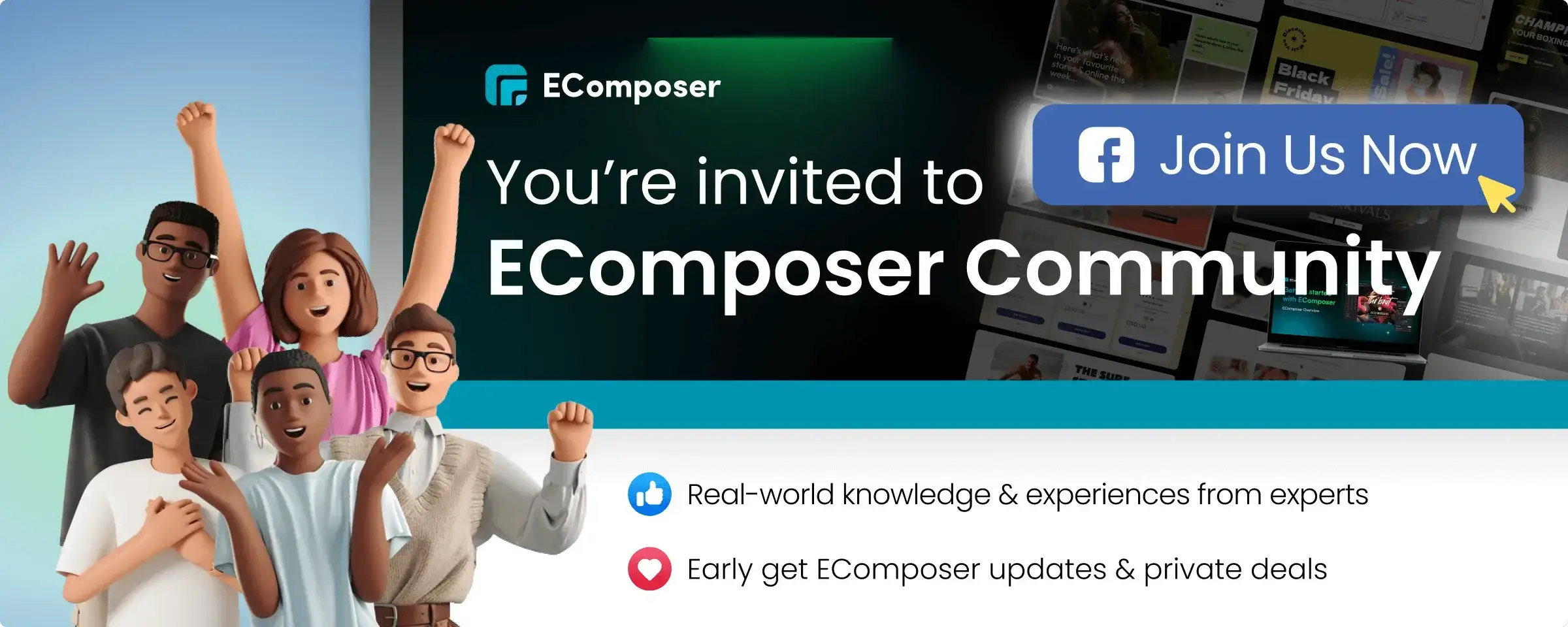







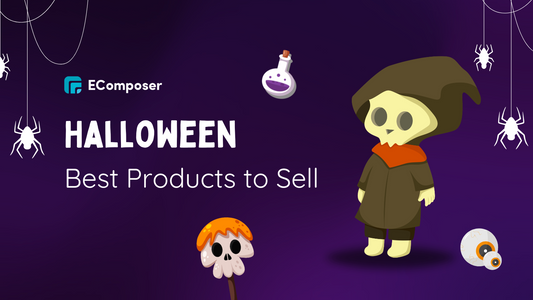
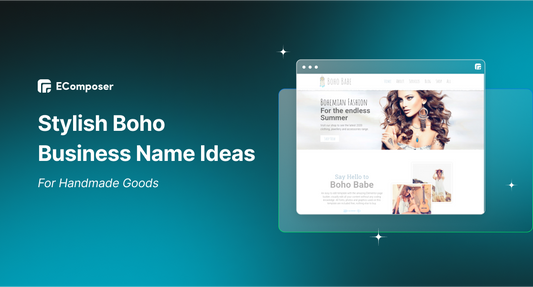
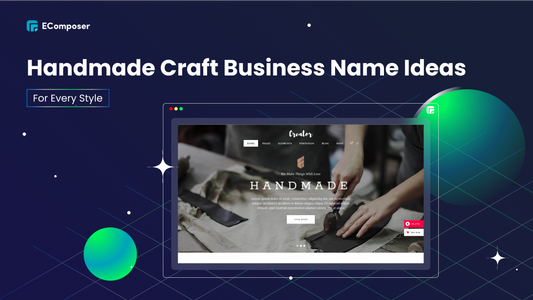
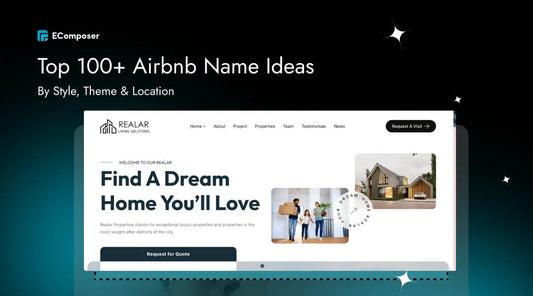







0 comments